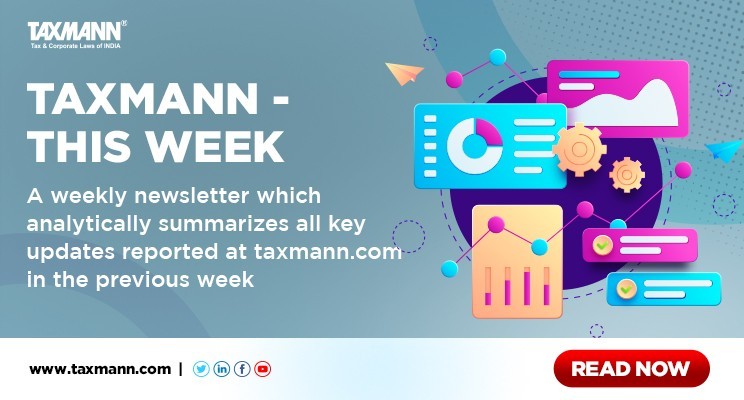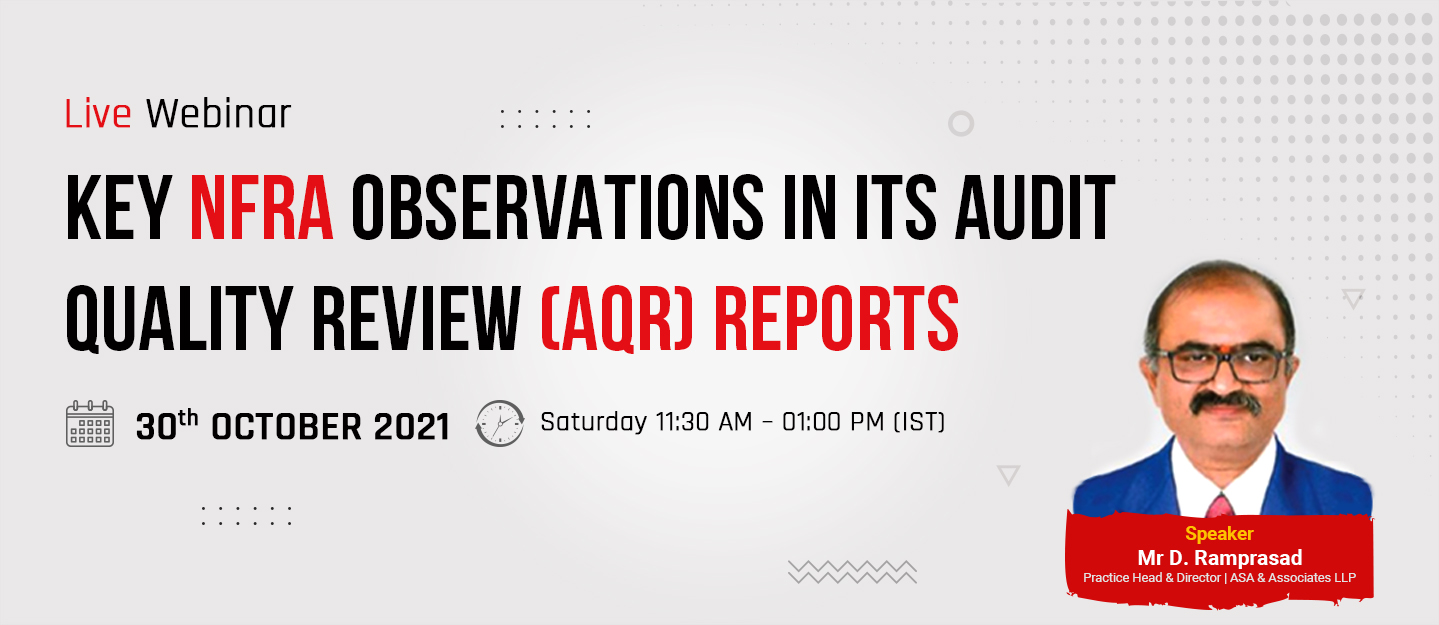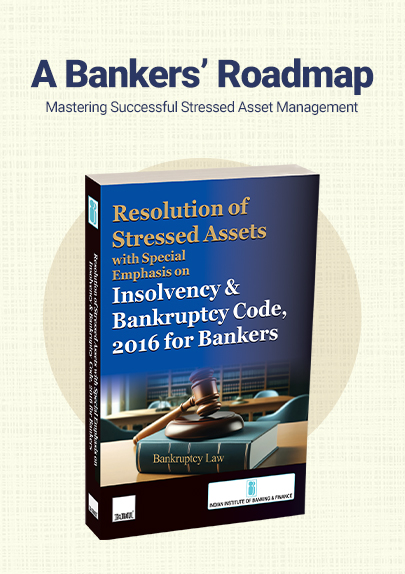Weekly Round-up on Tax and Corporate Laws | 18th October to 23rd October
- Blog|Weekly Round-up|
- 8 Min Read
- By Taxmann
- |
- Last Updated on 27 October, 2021
This weekly newsletter analytically summarizes the key stories reported at taxmann.com during the previous week from 18th to 23rd October 2021, namely:
(a) European Authorities to widen Amazon antitrust probe after Reuters story
(e) How to classify joint venture agreements in financial statements?
1. European Authorities to widen Amazon antitrust probe after Reuters story: Labour Union
(a) Amazon under the radar of Worldwide Trade Union
A worldwide trade union for the services industry requested European Antitrust Authorities to expand their investigation into Amazon Inc. to see if the co. manufactured counterfeit items and manipulated search results on its platform.
(b) Trigger point
Based on some internal Amazon documents, it was revealed that the e-commerce company ran a systematic campaign of copying products and manipulating search results in India, a key growth market, to boost its private brands such as AmazonBasics. The same issues were seen in the Reuters report.
The European Commission’s European arm in a letter to President Ursula Von Der Leyen and to EU Antitrust Chief Margrethe Vestager, stated that authorities must examine if Amazon participated in “similarly harmful activity within the European Union.”
In addition to the foregoing, the scale of Amazon’s operations to undermine that level playing field surface, further action is needed to ensure it is held accountable at every turn,” the letter, seen by Reuters, said.
However, Amazon and the European Commission spokespersons did not immediately reply to calls for comment. In contrast, the European authorities are already investigating Amazon’s position as a marketplace for merchants and a rival seller.
(c) Indictment
The Commission charged the US business for abusing its scale, influence, and data to gain an unfair advantage over smaller merchants selling on its web platform last year. Amazon said at the time that it only accounts for less than 1% of the global retail industry and that there are larger competitors in every region where it operates.
However, the Amazon documents reviewed by Reuters showed how the company’s private brands secretly exploited internal data from its India unit to copy products sold by other companies, then offered them on its platform. The company also promoted sales of its private brands by rigging search results on its India platform, the documents showed.
However, Amazon responded to the article by stating that “these assertions are factually false and unfounded.” The firm did not provide any more information. According to the firm, the way search results are displayed does not favor private-label items.
(d) Aftermath
Five members of the US House Judiciary Committee wrote to Amazon CEO Andy Jassy, after the Reuters article was published last week, accusing the company’s senior officials of misleading or perhaps lying to Congress about Amazon’s business practices.
US Democratic Senator Elizabeth Warren, a prominent critic of Amazon, called for breaking up the company after the report. While in India, a group representing millions of brick-and-mortar retailers has asked the government to take action against Amazon.
Read the story
Check out Taxmann’s Indian Competition Laws, which is a section-wise commentary on Competition Law. What sets this book apart is the unique combination of the study of both substantive and procedural elements of Competition Law in India along with Case Laws from the Indian, EU, UK & USA Courts
Here’s a Sample Chapter for your Reference
2. Rule 11UA amended in mid Assessment Year shall apply for transactions done during the whole AY: ITAT
The Bangalore Tribunal has ruled that when a rule for the valuation of shares is amended in the mid of the year, it shall apply to all shares issued during the whole Assessment Year.
Facts
The assessee-company allotted 4,50,032 equity shares of the face value of Rs. 10 at a premium of Rs. 136 per share on 14-8-2021 and received share premium. During the relevant previous year, on 21-11-2012, the assessee issued and allotted 146 shares at a very high premium. The assessee followed Discounted Cash Flow (DCF) method for valuation of same.
The Assessing Officer (AO) rejected the assessee’s explanations and contended that the DCF method was permissible only in respect of shares issued after 29-11-2012 when Rule 11UA was amended, providing for adopting either DCF or NAV method as the method of valuation of shares for Section 56(2)(viib). AO accordingly arrived at a value under the NAV method and brought to tax a sum of Rs. 2.75 crores.
On appeal, the CIT(A) affirmed the order of the AO. Aggrieved-assessee filed the instant appeal before the Tribunal.
Ruling
The Bangalore Tribunal held that the provisions of Section 56(2)(viib) were introduced by the Finance Act, 2012 with effect from assessment year 2013-14. Rule 11UA was amended by Notification No. 52/2012 dated 29-11-2012, whereby the DCF method was an acceptable method of valuation of shares.
Valuation of shares for section 56(2)(viib) has to be as on the date of issue of shares. The basis of valuation can be based on a method that is subsequently recognized by the legislature. It cannot be said that valuation is to be made only by the method that prevailed on the date of issue and allotment of shares.
Accordingly, the basis of valuation by the DCF method, which was one of the recognized methods during the previous year relevant to the assessment year 2013-14, ought to have been examined by the Assessing Officer and the Commissioner (Appeals).
Read the Ruling
Did you know, that you could order the latest books from Taxmann’s Online Store? Watch the video to find out more!

3. No writ against the show-cause notice to be entertained in a routine manner
The Madras High Court has recently held that a writ petition against a show-cause notice cannot be entertained unless it is established that the authority issuing show-cause notice has no jurisdiction or allegation of malafide are raised against official concerned. Therefore, the petitioner would be expected to defend his case before the competent authority. The Honorable High Court of Madras gives this ruling in the case of Maya Appliances (P.) Ltd. v. Assistant Commissioner, Circle 8, Chennai.
Facts
The petitioner, a registered taxpayer under GST, was a manufacturer and supplier of LPG stoves, wet grinders, etc. The competent authority issued a show-cause notice to the petitioner, provided all details regarding allegations, and asked to submit within 30 days its representations or documents to defend its case by availing opportunity. The petitioner filed a writ petition praying to quash impugned show-cause notice.
High Court
The Honorable High Court observed that writ against a show-cause notice might be entertained if it is established that the authority that issued show-cause notice has no jurisdiction or allegation of malafide are raised against the official concerned. The petitioner had not established any acceptable ground to entertain the writ petition. Thus, the petition is to be dismissed, and the petitioner would be expected to defend the case before competent authority by submitting explanations and statements. After that, the authorities would be bound to consider the materials available on record and the grounds raised by the petitioner in their defense statement and pass a speaking order.
Read the Ruling
The Latest from Taxmann.com!
Your virtual legal advisor that helps you understand complex legal concepts and enables you to give instant & best-in-class advice to your clients
Start your search using keywords or section no. here

4. The limitation period to file an appeal begins from the day of pronouncement of the order, not the date of uploading order: SC
In the instant case, the Apex Court held that the period of limitation for filing an appeal against an order of NCLT as per Section 61 of the IBC would start from the date of pronouncement of the order in the open court, not the date of the uploading of order.
Brief facts
The appellant had filed an appeal before the NCLAT without attaching the certified copy of the NCLT order, citing reasons they had applied for the same but hadn’t been issued. NCLAT dismissed the appeal for being time-barred. Challenging the NCLAT order, the appellant approached the Supreme Court. The appellant argued that the clock on limitation would run from the date a free copy is provided. However, the Court refuted the argument highlighting that an appeal if considered necessary and expedient by an aggrieved party is expected to be filed immediately without awaiting a free copy that may be received at an indefinite stage.
The questions raised
(a) When will the clock for calculating the limitation period run for proceedings under the IBC?
(b) Whether annexation of a certified copy mandatory for an appeal to the NCLAT against an order passed under the IBC?
The Supreme Court observed that the answers to the questions must be based on a harmonious interpretation of the applicable legal regime. The IBC is a Code in itself and has an overriding effect.
The Court further said that Sections 61(1) and 61(2) of the IBC consciously omit the requirement of limitation being computed from when the “order is made available to the aggrieved party”, in contradistinction to Section 421(3) of the Companies Act.
“It is not open to a person aggrieved by an order under the IBC to await the receipt of a free certified copy under Section 420(3) of the Companies Act 2013 read with Rule 50 of the NCLT and prevent limitation from running. Accepting such construction will upset the timely framework of the IBC” the Court said
Regarding the question of attachment of a certified copy of the order and appeal, the Court held that Rule 22(2) of the NCLAT rules renders it mandatory. The Court made it clear that the litigant has to file its appeal within thirty days, which can be extended up to a period of fifteen days, and no more, upon showing sufficient cause. A sleight of interpretation of procedural rules cannot be used to defeat the substantive objective of legislation that has an impact on the economic health of a nation, Ruled SC.
The Court concluded that the appellant should have exercised diligence to obtain a certified copy of the order to file an appeal. Since the appeal was barred by limitation, therefore, NCLAT was correct in dismissing his appeal.
Read the Ruling
Check out Taxmann’s Insolvency and Bankruptcy Law Manual With IBC Law Guide. This book is a Compilation of Amended, Updated & Annotated Insolvency and Bankruptcy Code 2016 [as amended by the Insolvency and Bankruptcy Code (Amendment) Act 2021] (‘IBC’). What sets it apart is the ‘unique way of presenting’ the IBC and Relevant Rules/Regulations, Notifications, Circulars, Guidelines, RBI Directions, Provisions of other Acts referred to in the IBC.
Here’s a Sample Chapter for your Reference
5. How to differentiate between the joint venture and subsidiary while preparing financial statements?
Example
J Ltd. is a joint venture company formed by P Ltd., Q Ltd., R Ltd., and S Ltd. The companies have entered into a joint venture agreement to regulate their relationship as shareholders and Joint Venture partners on mutually agreed terms and conditions as specified in the JV agreement. P Ltd. holds more than 50% of equity shares of J Ltd. along with its subsidiary company Q Ltd. While preparing financial statements P Ltd. classified J Ltd. as its subsidiary company.
Whether the accounting classification made by P Ltd. is correct, if not, what should be the correct classification in the standalone and consolidated books of accounts of P Ltd.?
Answer
The Expert Advisory Committee (EAC) of ICAI has held that the accounting classification made by P Ltd. is not correct.
In a joint venture agreement, two or more parties are obligated by a contractual agreement to exert joint control over the relevant activity of a company, according to Ind AS 111 Joint Arrangements. The contract might be written between the parties or included in the company’s Articles of Association. Furthermore, the term “joint control” refers to the requirement of two or more parties to agree on a specific decision. In other words, no party can make decisions on its own.
Further, as per Ind AS 110 Consolidated Financial Statements, an entity cannot be classified as a subsidiary merely based on shareholding, if another entity controls an entity, then it is called as a subsidiary company.
Based on the above, we can conclude that the accounting classification made by P Ltd. merely on the basis of shareholding is not correct. Here, the agreement mentioned above is considered a joint venture agreement. Therefore, provisions of Ind AS 111 shall be applied while accounting for the same.
Read the Story
Also Read: Taxation of Real Estate Developers & Joint Development Arrangements with Accounting Aspects
LIVE Webinar!
Key NFRA Observations in its Audit Quality Review (AQR) Reports
30th October 2021 | 11:30 AM
Speaker: D Ramprasad
Disclaimer: The content/information published on the website is only for general information of the user and shall not be construed as legal advice. While the Taxmann has exercised reasonable efforts to ensure the veracity of information/content published, Taxmann shall be under no liability in any manner whatsoever for incorrect information, if any.

Taxmann Publications has a dedicated in-house Research & Editorial Team. This team consists of a team of Chartered Accountants, Company Secretaries, and Lawyers. This team works under the guidance and supervision of editor-in-chief Mr Rakesh Bhargava.
The Research and Editorial Team is responsible for developing reliable and accurate content for the readers. The team follows the six-sigma approach to achieve the benchmark of zero error in its publications and research platforms. The team ensures that the following publication guidelines are thoroughly followed while developing the content:
- The statutory material is obtained only from the authorized and reliable sources
- All the latest developments in the judicial and legislative fields are covered
- Prepare the analytical write-ups on current, controversial, and important issues to help the readers to understand the concept and its implications
- Every content published by Taxmann is complete, accurate and lucid
- All evidence-based statements are supported with proper reference to Section, Circular No., Notification No. or citations
- The golden rules of grammar, style and consistency are thoroughly followed
- Font and size that’s easy to read and remain consistent across all imprint and digital publications are applied







 CA | CS | CMA
CA | CS | CMA


